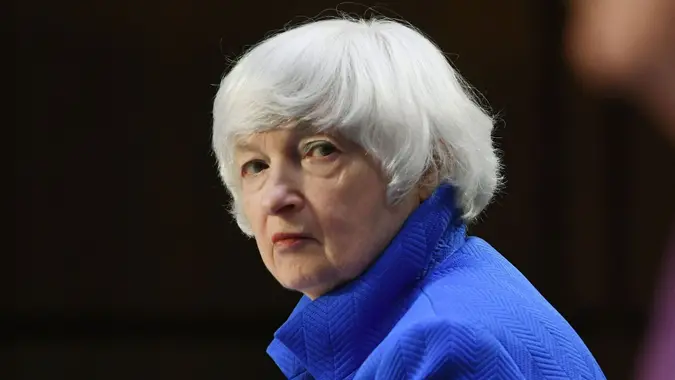Government Shutdown Update: Here’s the New Default Deadline and What It Means for You

Commitment to Our Readers
GOBankingRates' editorial team is committed to bringing you unbiased reviews and information. We use data-driven methodologies to evaluate financial products and services - our reviews and ratings are not influenced by advertisers. You can read more about our editorial guidelines and our products and services review methodology.

20 Years
Helping You Live Richer

Reviewed
by Experts

Trusted by
Millions of Readers
With the government shutdown having been averted, at least for now, the next big date of consequence is the potential deadline for government default: Dec. 15, 2021.
What’s the Difference?
On Dec. 2, Congress approved emergency legislation to avoid a government shutdown, meaning that it agreed to fund the government through the middle of February. The Senate would later confirm this funding, averting said shutdown. However, the Treasury Department has also declared that it will run out of money if the debt ceiling is not raised by Dec. 15 of this year.
U.S. Treasury Secretary Janet Yellen proclaimed in November that Dec. 15 would be the date by which the Treasury could potentially run out of money, meaning that the funds would not be in place to properly allow the government to function while repaying its debts.
When we speak of government default, it means the threat of the U.S. failing to deliver due payment on its loans. The debt ceiling is the legally allowable amount of debt the government can hold in order to pay off receipts of old debts. Due in part to the stresses caused by the coronavirus pandemic, the government had an unprecedented year of borrowing in order to finance relief programs, including stimulus payments and advance payments of child tax credits. This is borrowing that has already taken place though, and the debt ceiling needs to be raised in order for the government to “make good” on its prior debts.
If the ceiling is not raised, it could affect the average consumer in a big way.
What a Government Default May Mean for You
The U.S. is considered one of the most credit-worthy nations in the world — never in its history has it defaulted on its own debt. Due to its high credit rating, borrowing is plentiful, and cheaper.
Should the U.S. default in the near term, this circumstance could have a direct impact on borrowing costs from your bank. This means mortgages, car loans, personal loans, or any form of borrowing could become more expensive. Ultimately, such a default may also lead to higher interest rates. Such an increase in interest rates would come in addition to — and in exacerbation of — an anticipated potential rate hike that is already expected on the horizon, one bolstered by runaway inflation, rising prices, and increased wages.
A U.S. default also has the potential to send shaky markets into murkier territory, as well as to plunge the country into another recession. Global markets would also be quite likely to be effected by such an announcement.
More From GOBankingRates
 Written by
Written by  Edited by
Edited by 
























